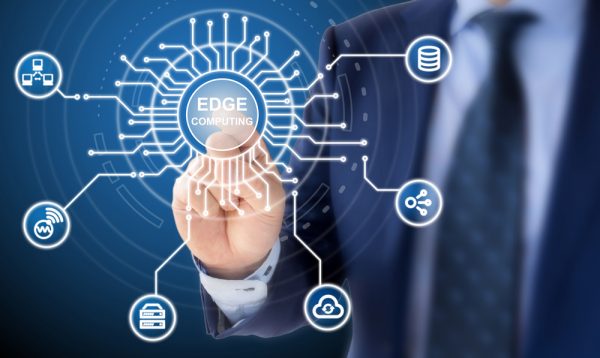Why the IIoT and edge computing are pushing data to the fore [Q&A]

The possibilities born out of the Industrial Internet of Things (IIoT) may seem endless as the scale of what it can accomplish continues to rise. By adding edge computing into the equation, the benefits for enterprises increase even further due to the real-time capabilities it enables.
With this shift comes an increased focus on data, which is at the heart of all IIoT and edge deployments. However, some enterprises are in different stages than others when it comes to utilizing that data and getting the most actionable results out of it for valuable business decision making. We spoke with Jason Andersen, VP of business line management for infrastructure availability company Stratus Technologies, to find out more.
BN: Would you say industrial companies are more focused on data now with the continued adoption of IIoT and edge computing?
JA: Historically, operational technology (OT) teams have thought about their industrial environments in terms of the automation equipment within it, identifying with the tools that made automation possible. This made them reluctant to change or introduce new technologies, as they did not see any potential for growth and adaptation in these areas. With the explosive growth in data resulting from increased computing intelligence at the edge of the network, I would say their mindset is definitely beginning to shift from the actual tools to focus more on the data that the tools are generating.
BN: Beyond the rapid growth of data, what do you think is driving this shift?
JA: I believe this evolution reflects the fact that operators are realizing the tremendous opportunities data and advanced analytics have for unlocking business value. Their concentration is therefore shifting more and more to focus on how leveraging edge computing can help them utilize their data for real-time analytics to drive decision making and increased efficiencies across their operations.
BN: What are some of the areas where these real-time capabilities can deliver increased efficiencies?
JA: One example would be predictive maintenance. By utilizing analytics at the edge -- right where information is being processed -- operators can see in real-time how their systems are preforming and can take immediate action to avoid issues that can lead to loss of ROI, like leaks in equipment or unplanned downtime. By being able to see when a problem might occur, operators can deploy maintenance teams in a more efficient way, allowing them to send the right people at the right time. This also extends the life of assets, as healthier equipment can last for a long period of time.
BN: Where would you say most enterprises currently stand today in terms of leveraging data generated by IIoT and edge computing? Are any industries utilizing it effectively yet?
JA: I believe there are four phases that industrial enterprises fall into -- something I like to call the 'four I’s'. The first, where most currently fit, is the 'informed' stage. This includes industries that are reluctant to change due to concerns about costs of implementing new technologies, but are beginning to understand and realize the benefits IIoT and edge computing can bring to their business. However, these enterprises have not yet made moves to tap its potential -- they are more focused on looking ahead and thinking tactically about their progression to the next few phases.
The second I is what I would call the 'insightful' step. In this stage, enterprises want to drive new insights and increase efficiencies, so they are implementing business analytics to help do so. Once business analytic capabilities have been put into place, enterprises can advance to the 'intelligent' phase where real-time optimization comes into play brought about by edge computing that happens closer to production processes and reduces latency. I believe certain industries, like food and beverage for example, are already realizing these benefits. They have complex supply chains with multiple different sources, hand-offs and endpoints that make traceability difficult. By utilizing edge computing, they can place real-time intelligence at each of these points to help maintain the highest quality and safety of food.
The final phase is the 'invisible' stage. This is where technologies that leverage artificial intelligence will process data and makes real-time decisions with no human interaction.
BN: In order to succeed in this last stage, what kinds of technologies will enterprises need?
JA: Technologies that are operationally simple and autonomous will be a must. With a lack of IT staff in these locations, due to either OT professionals being the ones managing the equipment or a zero-touch environment with no people there are all, systems should be pre-configured and self-maintaining, with automated IT administrative tasks happening in the background.
BN: What parting message would you give enterprises looking to evolve along these four stages?
JA: In addition to the simple and autonomous infrastructure I mentioned above, there is another requirement that enterprises can start leveraging -- even today. With increasing dependence on data, enterprises need fault-tolerant availability solutions that can protect this valuable information and keep systems up and running at all times so that no data gets lost or compromised.
Image credit: BeeBright/depositphotos.com
